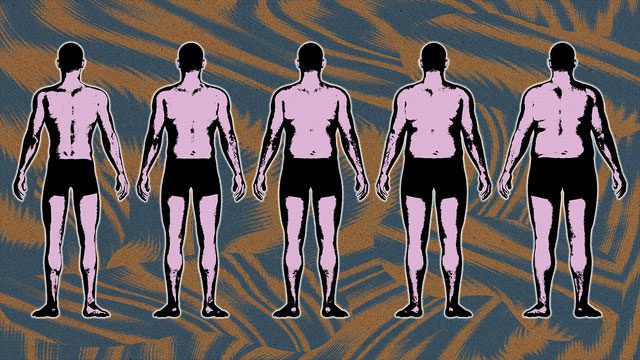It turns out that body shape is not only related to appearance but also closely linked to lifespan!
The Connection Between Thick Neck, Big Belly, and Longevity: Increased Risk of Heart Disease and Stroke
In today’s society, more and more people are concerned about their health. With improved living standards and changes in eating habits, the rates of chronic diseases such as heart disease and stroke are on the rise. Studies have shown that having a thick neck and a big belly are closely associated with the risks of heart disease and stroke.
Let’s explore the relationship between a thick neck and health. Fat accumulation around the neck is often a sign of obesity. Obesity not only causes various negative effects on the body but also increases the risk of heart disease and stroke. Research indicates that fat accumulation around the neck is closely related to heart disease incidence. This is because fat around the neck can compress the carotid arteries, leading to insufficient blood supply and resulting in heart disease or stroke.

Research shows that fat accumulation around the neck is closely related to heart disease incidence.
A big belly is also closely related to the risk of heart disease and stroke. Belly fat not only causes aesthetic concerns but, more importantly, it can accumulate in internal organs, including the liver, kidneys, and heart. These fat cells secrete substances called cytokines, causing chronic inflammation and damaging blood vessel walls. Damaged blood vessels can easily form blood clots, leading to heart disease and stroke.
In addition to changes in body shape, a thick neck and big belly are also closely related to several health indicators. For example, studies have found that a thick neck is associated with an increased risk of high blood pressure and high cholesterol. High blood pressure and high cholesterol are risk factors for heart disease and stroke.
Moreover, a thick neck and big belly may also be related to metabolic syndrome—a group of conditions that includes poor health indicators such as high blood sugar, high cholesterol, high blood pressure, and obesity, all of which are closely linked to the incidence of heart disease and stroke.

The good news is that by changing eating habits and increasing physical activity, we can reduce the potential impact of a thick neck and big belly on our lifespan. First and foremost, we should control our diet and reduce the intake of fatty, sugary, and salty foods. These foods often lead to weight gain and increase the risk of heart disease and stroke.
Thick Neck and Big Belly as Risk Indicators for Health Issues: Diabetes and High Blood Pressure
The fast pace of modern life and unhealthy lifestyles have led to rising rates of obesity and health issues. A thick neck and a big belly are often considered risk indicators for health problems, meaning they may signal conditions such as diabetes and high blood pressure.
Let’s examine the link between a thick neck, big belly, and diabetes. Diabetes is a chronic condition characterized by insufficient insulin secretion in the body or abnormal cell response to insulin, leading to elevated blood sugar levels. A thick neck and big belly are often associated with fat accumulation in the body, which can interfere with insulin function, leading to insulin resistance and increasing the risk of diabetes.

Excess body fat can lead to high blood pressure.
A thick neck and big belly are also closely linked to high blood pressure. Hypertension is a common cardiovascular condition characterized by persistently high blood pressure, which puts significant strain on the heart and blood vessels. Studies have shown that excess body fat can lead to high blood pressure, with fat in the neck and belly playing a crucial role in this. Excess fat around the neck can increase pressure on the carotid arteries, affecting blood pressure control, while belly fat releases harmful substances that further exacerbate the risk of hypertension.
How can we prevent and manage these health issues? First and foremost, good eating habits are essential. We should reduce the intake of sugary and fatty foods while increasing the consumption of fruits, vegetables, and appropriate fiber. Additionally, a well-structured diet and regular eating can help manage weight and blood sugar levels, reducing the risk of diabetes and high blood pressure.
Maintaining a moderate amount of exercise is also important. Exercise can burn excess fat, enhance lung function, and lower blood pressure. Engaging in 30 minutes of aerobic exercise daily, such as jogging, swimming, or fast walking, is very effective.
Getting regular sleep and reducing stress are also crucial factors in preventing diabetes and high blood pressure. Stress can cause the body to produce harmful substances, worsening illness. Therefore, we need to learn how to relax and find stress-relief methods suitable for ourselves, such as exercising, listening to music, reading, etc. Additionally, maintaining a good work and rest routine will help keep the body functioning normally.



















































